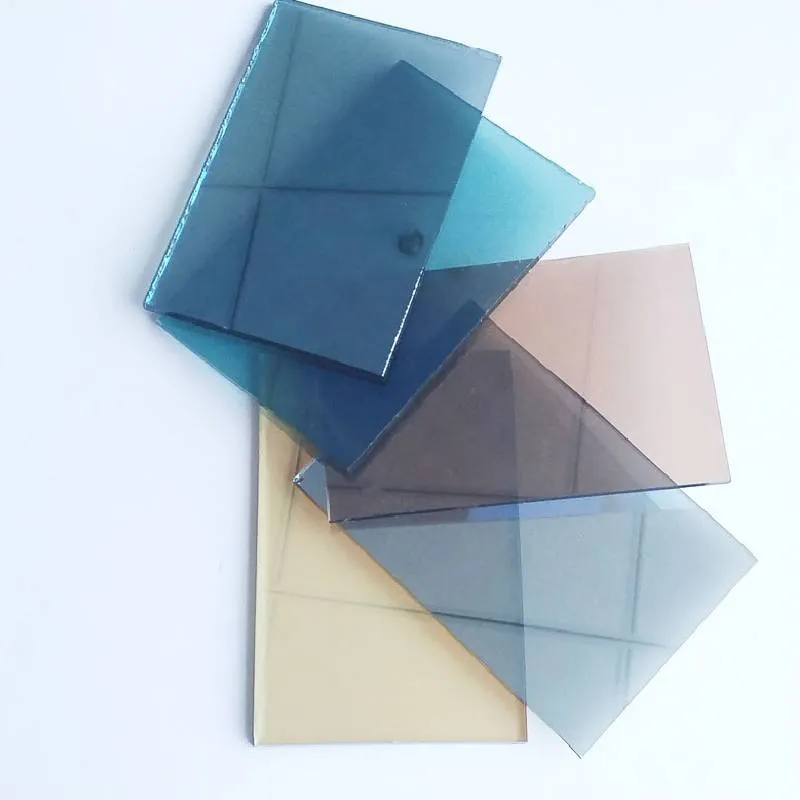Decorative architectural glass represents a fusion of aesthetic appeal and functional design, playing a crucial role in modern construction and interior design. Its transformative capabilities enhance not only the aesthetic value of a space but also its functionality, making it a staple in both residential and commercial settings. With technological advancements, the versatility of decorative glass has drastically increased, offering designers and architects a broad palette of creative possibilities.

Architectural glass comes in various forms, including etched, frosted, stained, and colored varieties, each offering unique characteristics that cater to diverse design needs. Experts often emphasize the significance of selecting the appropriate type of decorative glass to align with the intended use of a space. For instance, frosted glass provides privacy while allowing natural light to permeate, making it ideal for office partitions and bathroom enclosures.
One of the most remarkable aspects of decorative architectural glass is its ability to create a dynamic interaction between light and space. Such glass types can manipulate natural or artificial light to create reflections, shadows, and patterns that breathe life into a space. Designers have mastered the art of using decorative glass to enhance the visual depth and dimension of rooms, often incorporating it into walls, ceilings, and even flooring.

In recent years, there's been a growing trend of custom-designed glass installations that reflect personal or brand identities. This bespoke approach allows a seamless transition from concept to execution, with artisan-crafted glass panels that exhibit intricate patterns, logos, or abstract designs tailored to client preferences. This customized methodology not only heightens the uniqueness of the space but also resonates with the growing consumer demand for personalized experiences.
Moreover, the application of decorative architectural glass extends beyond aesthetics. It serves essential functional roles such as safety, sustainability, and energy efficiency. Laminated and tempered glass options provide enhanced security by reducing the risk of breakage and injury. Technologically advanced options like electrochromic glass actively contribute to energy efficiency by adjusting its tint in response to sunlight, thereby regulating indoor temperature and reducing the reliance on artificial heating and cooling systems.
decorative architectural glass
The eco-friendly benefits of decorative architectural glass cannot be overlooked. With the construction industry increasingly focusing on sustainable materials, glass manufacturers have responded by producing recyclable and energy-efficient glass solutions. These products significantly reduce carbon footprints by improving building insulation and contributing to lower energy consumption, thus aligning with global environmental goals.
Furthermore, experts in the field highlight the importance of certifications and standards that indicate the quality and reliability of decorative glass. Certifications such as LEED (Leadership in Energy and Environmental Design) or ISO standards assure clients of the glass's conformity to international safety and environmental regulations. This credibility fosters trust among stakeholders, ensuring they make informed decisions when incorporating glass into their projects.
For those embarking on projects involving decorative architectural glass, engaging with seasoned professionals is paramount. Architects and interior designers with extensive experience in handling glass can provide invaluable insights into the nuances of installation, maintenance, and integration with other design elements. Their expertise can prevent common pitfalls such as improper installation or mismatched design elements, which might compromise both the functionality and aesthetic of the glass.
In terms of enhancing a space's ambiance, decorative architectural glass offers an unparalleled opportunity to infuse creativity and character. Whether aiming for a minimalist design with subtle elegance or a bold statement with vibrant colors and patterns, glass offers a versatile medium to achieve the desired look. Its ability to complement and elevate other design elements cements its position as a preferred choice in modern architecture.
In conclusion, choosing decorative architectural glass is a strategic decision that combines artistry, engineering, and environmental consciousness. As industry standards evolve and consumer preferences shift towards more sustainable and personalized designs, the role of decorative glass is set to become even more pivotal. By investing in high-quality, expertly crafted glass solutions, businesses and homeowners alike can enjoy a blend of aesthetic charm, increased property value, and long-term sustainability.
 Afrikaans
Afrikaans  Albanian
Albanian  Amharic
Amharic  Arabic
Arabic  Armenian
Armenian  Azerbaijani
Azerbaijani  Basque
Basque  Belarusian
Belarusian  Bengali
Bengali  Bosnian
Bosnian  Bulgarian
Bulgarian  Catalan
Catalan  Cebuano
Cebuano  Corsican
Corsican  Croatian
Croatian  Czech
Czech  Danish
Danish  Dutch
Dutch  English
English  Esperanto
Esperanto  Estonian
Estonian  Finnish
Finnish  French
French  Frisian
Frisian  Galician
Galician  Georgian
Georgian  German
German  Greek
Greek  Gujarati
Gujarati  Haitian Creole
Haitian Creole  hausa
hausa  hawaiian
hawaiian  Hebrew
Hebrew  Hindi
Hindi  Miao
Miao  Hungarian
Hungarian  Icelandic
Icelandic  igbo
igbo  Indonesian
Indonesian  irish
irish  Italian
Italian  Japanese
Japanese  Javanese
Javanese  Kannada
Kannada  kazakh
kazakh  Khmer
Khmer  Rwandese
Rwandese  Korean
Korean  Kurdish
Kurdish  Kyrgyz
Kyrgyz  Lao
Lao  Latin
Latin  Latvian
Latvian  Lithuanian
Lithuanian  Luxembourgish
Luxembourgish  Macedonian
Macedonian  Malgashi
Malgashi  Malay
Malay  Malayalam
Malayalam  Maltese
Maltese  Maori
Maori  Marathi
Marathi  Mongolian
Mongolian  Myanmar
Myanmar  Nepali
Nepali  Norwegian
Norwegian  Norwegian
Norwegian  Occitan
Occitan  Pashto
Pashto  Persian
Persian  Polish
Polish  Portuguese
Portuguese  Punjabi
Punjabi  Romanian
Romanian  Russian
Russian  Samoan
Samoan  Scottish Gaelic
Scottish Gaelic  Serbian
Serbian  Sesotho
Sesotho  Shona
Shona  Sindhi
Sindhi  Sinhala
Sinhala  Slovak
Slovak  Slovenian
Slovenian  Somali
Somali  Spanish
Spanish  Sundanese
Sundanese  Swahili
Swahili  Swedish
Swedish  Tagalog
Tagalog  Tajik
Tajik  Tamil
Tamil  Tatar
Tatar  Telugu
Telugu  Thai
Thai  Turkish
Turkish  Turkmen
Turkmen  Ukrainian
Ukrainian  Urdu
Urdu  Uighur
Uighur  Uzbek
Uzbek  Vietnamese
Vietnamese  Welsh
Welsh  Bantu
Bantu  Yiddish
Yiddish  Yoruba
Yoruba  Zulu
Zulu 


